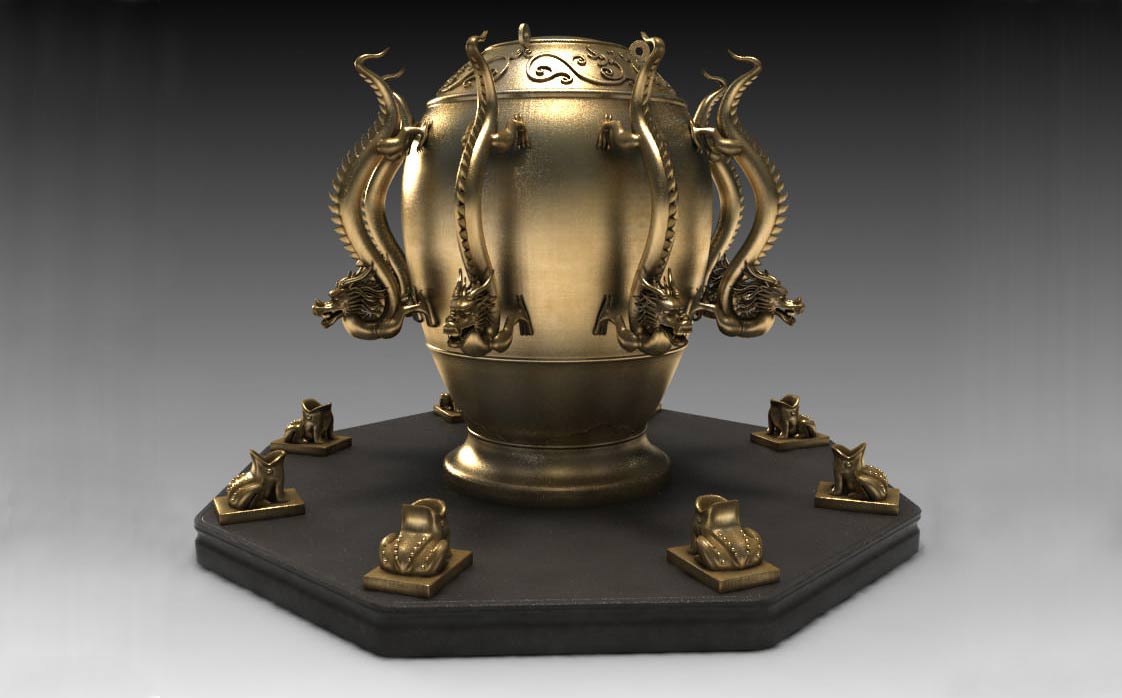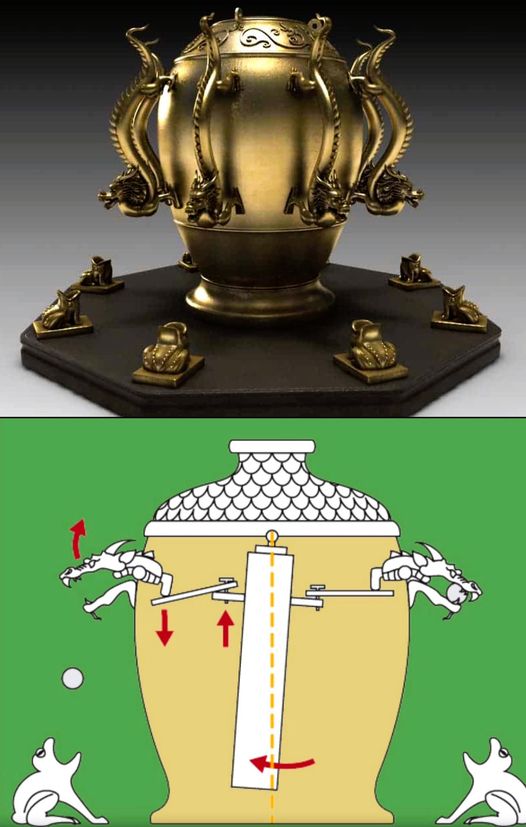The Creation of a Revolutionary Device
In 132 AD, the brilliant Chinese polymath Zhang Heng crafted an extraordinary device that captivated the ancient world with its enigmatic precision. This seismoscope, an elegantly designed bronze vessel adorned with eight dragon heads, held a secret within its form. Each dragon clutched a bronze ball, poised above the open mouth of a waiting frog.

Initial Skepticism and the Turning Point
Initially met with skepticism and doubt, Zhang Heng’s invention faced ridicule from those who couldn’t fathom its capabilities. However, the turning point came when the seismoscope detected an earthquake, and a ball dropped from one of the dragons, pointing west. Despite no immediate tremors felt locally, a few days later, messengers arrived with news of an earthquake in the west, proving Zhang Heng’s invention accurate and silencing his critics.
The Mechanism of Detection

When the earth trembled, an unseen mechanism within the vessel was stirred, prompting one of the dragons to release its ball into the corresponding frog’s mouth. This act revealed the direction of the distant upheaval, guiding aid to where it was needed most.
A Blend of Artistry and Engineering
Zhang Heng’s invention, a blend of artistry and engineering, stood as a marvel of ancient ingenuity. Its true workings were a testament to the profound understanding of natural forces possessed by the ancients. The seismoscope’s ability to accurately detect and indicate the direction of distant earthquakes marked it as a pioneering achievement in the history of seismology.

Legacy of Zhang Heng’s Seismoscope
Today, Zhang Heng’s seismoscope is celebrated not only for its scientific significance but also for its cultural and historical impact. It represents an early example of humanity’s quest to understand and mitigate the effects of natural disasters, highlighting the enduring legacy of ancient innovations that continue to inspire modern technology.
